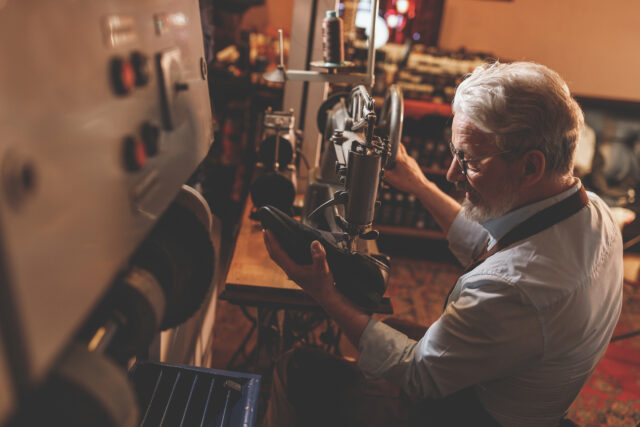In an increasingly fast-paced and innovation-driven world, technology that was cutting-edge a decade ago may now be quietly eroding your facility’s efficiency, profitability, and competitiveness.
Technology obsolescence — when equipment becomes outdated or unsupported — is no longer a distant risk; it’s a present and growing threat.
This article dives deep into why outdated equipment is a silent killer of business performance, how to recognize the hidden costs it imposes, and what steps facility managers must take to future-proof operations.
Understanding Technology Obsolescence
Technology obsolescence occurs when equipment, systems, or software become:
- Inefficient compared to newer alternatives
- Incompatible with evolving operational requirements
- Unsupported by manufacturers or service providers
- Increasingly costly to maintain, repair, or operate
In facility management, this covers a broad range of assets:
- HVAC systems
- Building automation systems (BAS)
- Security and surveillance systems
- Production machinery
- Energy management systems
- IT infrastructure and communication networks
While aging assets might still technically function, their real cost often goes unnoticed — hidden in operational inefficiencies, rising maintenance expenses, missed opportunities, and increased risks.
The Hidden Costs of Aging Equipment
Outdated technology does more than slow down operations — it creates a domino effect across your entire facility’s performance. Let’s break down the specific ways it hurts your bottom line:
1. Escalating Maintenance and Repair Costs
Older equipment typically requires more frequent and costly repairs. Parts may become scarce or custom-ordered, and specialized technicians may be harder to find — both driving up costs.
Fact: Studies show that after 10 years, the average annual maintenance cost of equipment can increase by over 30–50%.
2. Decreased Energy Efficiency
Technologies developed even a decade ago often lack the energy optimization features available today. Older HVAC units, motors, and lighting systems can consume up to 40% more energy than modern counterparts.
Higher energy consumption = Higher utility bills = Lower profitability.
3. Downtime and Productivity Losses
As equipment ages, breakdowns become more frequent and more severe.
Unexpected downtime directly affects productivity, service delivery, and customer satisfaction — especially in industries like healthcare, manufacturing, and logistics where uptime is critical.
Every hour of unplanned downtime can cost facilities thousands — even tens of thousands — of dollars depending on the sector.
4. Safety and Compliance Risks
Outdated systems may not meet updated safety codes, air quality standards, or cybersecurity requirements.
This not only exposes facilities to legal and financial risks but also endangers employees, tenants, and visitors.
Example:
Older building automation systems may lack cybersecurity protocols, making them vulnerable to attacks that could compromise operational safety.
5. Missed Opportunities for Smart Integration
Modern systems — from IoT-enabled HVAC to predictive maintenance platforms — offer valuable data insights and automated efficiencies.
Aging technology often cannot integrate with new tools, leaving facilities locked out of powerful capabilities like:
- Real-time monitoring
- Energy optimization
- Predictive analytics
- Remote access and control
Being stuck with “data-silent” equipment means falling behind competitors who are leveraging smart technology to cut costs and improve performance.
Real-World Example: How Obsolescence Hits the Bottom Line
Imagine a 250,000 sq. ft. hospital still relying on a 15-year-old HVAC system:
| Area of Impact | Old System | Modern System | Annual Financial Impact |
|---|---|---|---|
| Energy Efficiency | 55% | 85% | +$75,000 saved |
| Maintenance Costs | Frequent failures | Minimal preventive maintenance | +$40,000 saved |
| Downtime | 12 hours/year | 2 hours/year | +$15,000 in avoided disruption |
| Compliance Risks | Moderate | Fully compliant | Avoid potential fines |
- Total estimated hidden loss per year: $130,000+
- Payback period for new system investment: 3–5 years
Clearly, the cost of “saving money” by hanging onto aging systems can far outweigh the cost of modernization.
Why Facilities Delay — and Why It’s Risky
Despite the clear risks, many facilities postpone equipment upgrades for reasons like:
- Budget constraints
- Fear of operational disruption during replacement
- Lack of awareness about the true cost of aging equipment
- Short-term thinking: focusing on initial cost rather than lifecycle cost
Unfortunately, delaying upgrades compounds risks and financial losses over time — often turning a manageable investment today into an emergency crisis tomorrow.
How to Identify and Address Technology Obsolescence
Proactive facilities management starts with strategic asset evaluation. Here’s how to stay ahead:
1. Perform a Full Asset Audit
Evaluate the age, condition, performance, and manufacturer support status of critical equipment.
2. Prioritize by Risk and ROI
Focus first on systems where failure would have the greatest operational or financial impact.
3. Plan Capital Upgrades Strategically
Develop a phased investment plan that balances cost with risk mitigation.
4. Explore Financing Options
Options like energy savings performance contracts (ESPCs) and equipment leasing can help spread out the financial impact of upgrades.
5. Stay Informed
Keep track of upcoming end-of-life (EOL) dates from manufacturers and monitor emerging technologies that could drive efficiency gains.
The Strategic Advantage of Early Action
Facilities that embrace proactive technology modernization benefit from:
- Lower operating costs
- Increased reliability and uptime
- Improved employee and occupant satisfaction
- Enhanced safety and compliance
- Future-readiness and scalability
In a competitive landscape, facilities with modern, efficient, and integrated systems are better positioned to grow, adapt, and succeed.
Final Thoughts: The Cost of Doing Nothing Is Rising
Technology obsolescence is not just a technical problem — it’s a business risk.
By failing to act, facilities jeopardize profitability, safety, and competitive advantage.
Upgrading critical systems may require upfront investment, but the long-term gains — operational resilience, energy savings, reduced risk, and improved reputation — far outweigh the costs.
The future belongs to facilities that innovate, not those that stagnate.
Is your facility ready for tomorrow?
It’s time to assess, upgrade, and thrive.







